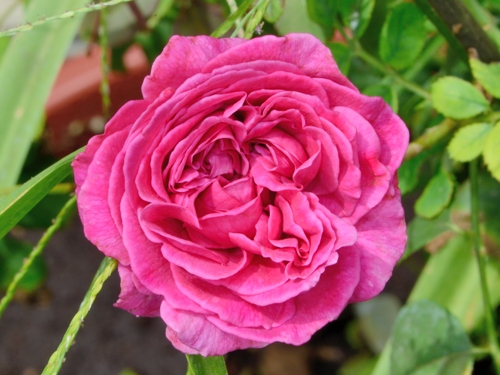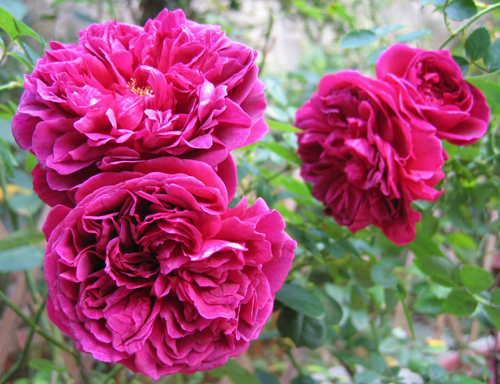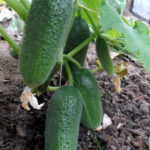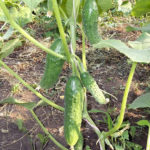Rose William Shakespeare
The so-called English roses of David Austin make up a separate group that is very popular among gardeners. The breeder began working on them in the 80s of the last century, crossing old European varieties with floribundas and hybrid tea roses. As a result, he received a number of varieties, distinguished by large flowers, a long flowering period, aroma and resistance to common diseases. Our current heroine is one of them.

History of creation
The variety is also known under the name "William Shakespeare 2000", which captures the year of the presentation of this rose at the first exhibition. The breeder is a well-known nursery from Britain "David Austin Limited", specializing in English roses. But the variety itself was created earlier, in 1994, and was tested for all six years without being commercial.
The thing is that the rose in question is, so to speak, a remake. Its predecessor was Austin's William Shakespeare, created in 1987 under the registration name AUSroyal. By the way, it exists on the market even now, although it is inferior in popularity to “our” variety.
Outwardly, the varieties are almost identical, sometimes even a specialist cannot distinguish them. Perhaps the new version has only a slightly more branchy bush, and carmine shades appear in the color of the petals. But the highlight is that the earlier variety has a significant drawback: it is easily infected with diseases, primarily various rusts and powdery mildew. This is what prompted Austin's specialists to resume work on his rose in order to make it more resistant to disease. In parallel, they increased the frost resistance of the variety, bringing it to -26 °.
Austin breeders are now replacing the old rose with a new one in order to remove the "previous version" from the market. Nevertheless, as already noted, it is still found in many gardens in Europe and America.

Description of appearance
The plant is medium-sized, about 1.2 meters high, but with good care and more. The bush is strong, fast-growing, with dense vertical shoots. Leaves are dull, medium in size, abundantly covering branches.
The flowers are velvety red, gradually turning purple. Austin himself considered "William Shakespeare" the best red rose among all the English. Buds appear not only at the ends of the shoots, but throughout the bush. As a rule, they are collected in large clusters that stay on the branches for about two weeks. In the first 2-3 days after blooming, the flower retains a cupped shape, then gradually becomes almost flat. An important advantage is that buds appear quickly on new shoots.
The blossoming flower gives off a tangible scent of a rose, similar to the old English varieties. Each flower is large, at least 10 cm in diameter, while flowering lasts with short interruptions throughout the warm season. The shape of the flower is densely double, there are at least 40 petals, but often even more (sometimes up to a hundred!).
Agrotechnical features
Care for this flower should be the same as for the rest of the English roses. In regions where winter temperatures drop below -25 °, low pruning and shelter is required, in warmer areas, the shoots can simply be cut by one third.
In the summer, given the abundant flowering of the variety, the fading brushes should be removed in time in order to stimulate the emergence of new ones and not to overload the bush. The plant prefers well-lit areas with nutritious, well-drained soil that needs to be moistened regularly. As has been said many times, the rose is distinguished not only by its exquisite beauty, but also by its excellent resistance to infection with diseases.
Traditional use
In the garden, "William Shakespeare" is prized as a solitary plant on which the viewer's attention is focused. During flowering, the bush simply blazes with a huge number of red and purple flowers, while emitting a pleasant smell. Also goes well with many other roses and plants, being part of green group plantings.
Thanks to the energetic, "hot" color, our heroine can decorate any, even gloomy corner of the garden. It grows quickly and powerfully, so sometimes even a hedge is created from it.









I can't imagine my garden without a rose William Shakespeare. Blooms continuously all summer. At first, completely covered with buds, and then single flowers. The flowers are densely double, and despite the fact that they are huge, the branches hold them, not dropping down to the ground. The bush is spreading, wide, it will look very good not only in a flower garden, but even alone in the middle of the garden. I have it growing in partial shade, which has its advantages, the flowers do not fade and last a long time. Absolutely unpretentious rose, never hurt anything. For the winter, be sure to bend down the branches and cover them with agrofibre. The branches of this rose are thin, the bush is small, and it is not difficult to bend them. In the spring it can be cut heavily, then there will be fewer flowers, but they will be very large. If you do not cut it too radically, it will be all strewn with flowers, but in a smaller size. This rosette cannot but please. Bright crimson flowers, similar to peony flowers, are visible from afar, so it is a decoration of any garden.